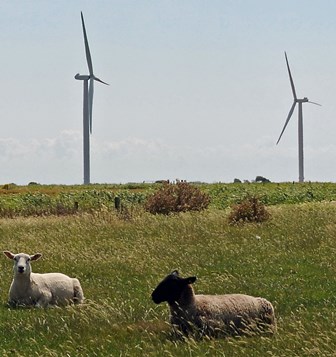Investing in renewable power
Why should investors look to investment companies?
 Whatever your views about climate change, there is no doubt that the UK and other countries will come to depend much more heavily on renewable power in the future – and particularly on wind and solar. For investors, these industries offer a compelling story: as governments seek to shift the energy mix towards renewables, they provide generous incentives and subsidies, which have the effect of souping up the returns on offer to those who finance alternative energy projects.
Whatever your views about climate change, there is no doubt that the UK and other countries will come to depend much more heavily on renewable power in the future – and particularly on wind and solar. For investors, these industries offer a compelling story: as governments seek to shift the energy mix towards renewables, they provide generous incentives and subsidies, which have the effect of souping up the returns on offer to those who finance alternative energy projects.
However, while the long term prospects are undoubtedly exciting, investing in renewables carries significant risk. The sector is to some extent dependent on government support, so when this changes, as it often does, performance may be adversely effected. Moreover, the returns available from renewables ultimately depend on the price at which it is possible to sell the power generated; this can be volatile – for example, the electricity price fell 13 per cent during the final three months of 2014.
It is against this backdrop that the renewable energy funds operate. The first point to make about these funds is that they are almost all closed-ended investment companies. This is because an open-ended structure would not be suitable for investment in renewables, which requires long-term commitment and often locks the investor into particular projects or contracts. It would not be possible to run a fund fluctuating in size on that basis.
So how do these investment companies protect their investors from the unusual risk profile of renewables? For one thing, says Iain Scouller, an investment company analyst at Oriel Securities, “These funds have power purchase agreements allowing them to lock in agreed electricity prices over time”. The effect, Scouller explains in a note published this week, is that “short-term fluctuations in the electricity price will not necessarily translate into a decline in revenues generated”.
That’s not to say these funds are completely immune from electricity price volatility. If prices remain low, that will be reflected in the negotiations that take place at the end of each purchase agreement – the fund will then have to lock into a lower price going forward.
There is also the issue of political risk to consider. In fact, the UK government is in the process of changing the way it supports large-scale renewable energy production, moving from a system of ‘renewables obligation certificates’ offering outright subsidies to ‘contracts for difference’, which operate more like price guarantees. Smaller projects, meanwhile, get ‘feed-in tariffs’ – effectively a direct government subsidy, though the value of the subsidy can rise and fall.
In fact, says Scouller, the switch to CfDs appears to be relatively benign for investment companies with exposure to the sector. Feed-in tariffs, which have recently been cut for installations in the home, otherwise remain generous too.
The biggest attraction for many investors in renewables funds is the dependable income stream these investment companies generate. With agreements in place governing their future revenues, it is possible for these funds to offer a good level of certainty about the dividends they will pay.
Happily, the recent decline in the electricity price does not appear to threaten this income stream. Scouller explains: “Many of the funds say that at the time of IPO there was a buffer in their model, whereby even if electricity prices fell 20 to 30 per cent, there should be no impact on dividend paying ability, although this buffer is being eroded as power prices fall.”

